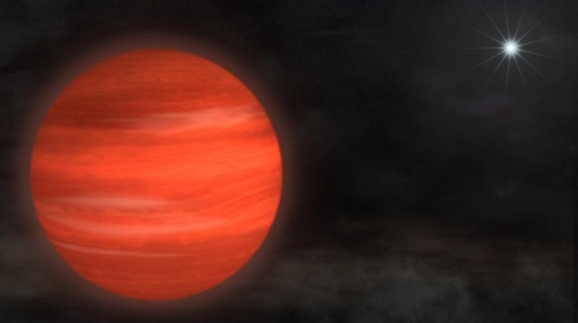Scienstists Discover A Super-Jupiter 13 Times The Size Of Our System’s Largest World
This article is more than 2 years old
Astronomers have discovered a planet 13 times the size of Jupiter — the largest planet in our solar system orbiting around the Kappa Andromedae star. It is reddish in color and is just at the mass between a star and a planet, which is why astronomers are having trouble classifying it.

The planet is called Kappa Andromedae b, and it was discovered using the High Contrast Instrument for the Subaru Next Generation Adaptive Optics and the Infrared Camera and Spectrograph on the Japanese Subaru Telescope at the top of Mauna Kea, Hawaii. It is about 170 light-years away from Earth and is about 30 million years old, which is relatively young considering our Sun is about five billion years old.
Astronomers have determined that Kappa Andromedae b is either a planet with high mass or a low-mass brown dwarf, which is a failed star that isn’t big enough to sustain nuclear fusion and become a fully fledged star. They are calling Kappa Andromedae b a “Super-Jupiter” and it could possibly be a bridge between the definition of a planet and a star.
‘According to conventional models of planetary formation, Kappa And b falls just shy of being able to generate energy by fusion, at which point it would be considered a brown dwarf rather than a planet,’ states NASA’s Michael McElwain. ‘But this isn’t definitive, and other considerations could nudge the object across the line into brown dwarf territory.’
Astronomers are not only thinking about Kappa Andromedae b’s size and mass, but the energy the celestial body radiates. Large planets radiate energy and heat left over from its formation. Due to Kappa Andromedae b’s placement and size it, may very well be a brown dwarf instead, but until scientists examine it with infrared cameras, they can’t be certain if Kappa Andromedae b is a planet or a brown dwarf.












